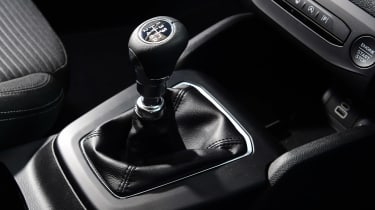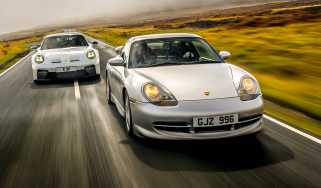Ford Focus review – engine, gearbox and technical highlights
All Focus models have three-cylinder engines with manual or dual-clutch transmissions
Ford has consolidated the Focus’s engine range by removing the extremes of the previous spread and expanding into mild-hybrid tech. This leaves a single 1-litre turbocharged three-cylinder petrol engine available in two power outputs, and with two transmission options. All but the entry-level variant fitted with the six-speed manual use a 48V mild-hybrid system that integrates a small ISG electric motor into the powertrain to reduce parasitic losses and function as the engine’s starter motor.
The two power outputs are 123bhp and 153bhp, with very limited figures of 125lb ft and 140lb ft respectively. Cars fitted with the mild-hybrid system add a further 16bhp, but Ford has not revealed the added torque of the ISG which will assist the combustion engine’s tame figures. The fundamental design of the EcoBoost three-cylinder engine is a good one, too, being the recipient of multiple International Engine of the Year awards in its specific engine category.
A fast-spinning turbo and flat torque curve are some of the EcoBoost’s trademarks, prizing flexibility over outright on-paper performance. Overall powertrain refinement is impressive too, and comes with smooth calm running right up to the redline. However, the excessive engine inertia that many three-cylinder engines suffer is present, and makes it feel a little soft-edged and unresponsive.
The manual’s throw is short and direct with little slack and a tightly controlled movement. The Focus’s original Powershift dual-clutch wasn’t much to write home about, with slow shifts and a tendency to slip the clutches too much on take-off, but its recent pairing to the mild-hybrid system should help smooth out the slurred shifts.
The chassis is nothing unusual for the class, pairing MacPherson strut front suspension with either a rigid torsion beam or independent rear suspension. As one of the first mainstream family hatchbacks to introduce independent suspension – previously called control blade from the first-generation Focus – it might come as a surprise to see it’s only fitted on higher-specification model variants of the current generation, but this isn’t unusual in the class today.





